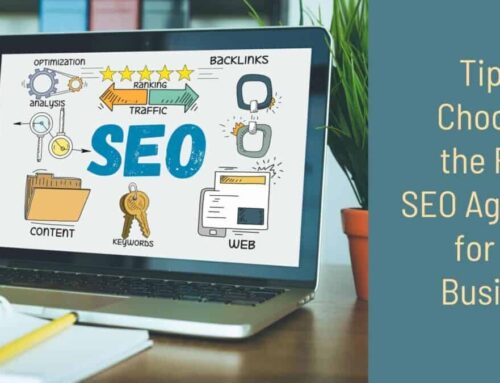Crafting a Winning SEO Blueprint: Strategies for Lasting Online Success
A repeatable SEO strategy is crucial for consistent results in organic search traffic and maintaining competitiveness, which involves SEO audits, on-site SEO, building high-quality backlinks, advanced optimization techniques, content promotion strategies, conversion optimization, remarketing, measuring SEO success, and adapting to future trends.
Introduction: Significance of a Repeatable SEO Strategy
A repeatable SEO strategy is paramount for businesses aiming to achieve consistent results in organic search traffic while maintaining a competitive edge in the digital realm. By establishing a structured approach to optimizing a website for search engines, businesses can ensure long-term success in driving organic search traffic and enhancing brand visibility over time. This structured approach provides a roadmap for companies to follow, outlining the necessary steps to achieve and maintain consistent results in SEO. For example, implementing a repeatable SEO strategy that includes keyword research, content optimization, and link building can streamline efforts and maximize impact. Consistency in SEO strategies allows businesses to adapt to evolving algorithms, user behaviors, and industry trends, ensuring a strong online presence and continuous growth.
A repeatable SEO strategy is foundational for businesses to align their digital marketing efforts with their overall goals and objectives. By integrating SEO strategies from the outset and maintaining consistency in implementation, companies can achieve sustainable growth and online success. This approach enhances brand visibility and credibility and fosters long-term relationships with target audiences, driving organic traffic and conversions. The importance of a repeatable SEO strategy cannot be overstated, as it forms the backbone of a successful online presence that resonates with users and search engines alike.
 The Importance of SEO Audits
The Importance of SEO Audits
SEO audits are invaluable tools for improving SEO performance and ensuring a website’s competitiveness in search engine rankings. In addition to identifying technical SEO issues, audits help uncover opportunities for enhancing on-site factors such as meta tags, heading structures, and internal linking strategies. Regular audits allow businesses to monitor their website’s health, address issues promptly, and optimize for better search engine performance. For example, by identifying and fixing technical issues like broken links, duplicate content, or slow page speed, businesses can enhance user experience and improve search engine rankings.
SEO audits are critical in monitoring the health of a website’s backlink profile and ensuring the quality and relevance of inbound links. Regular audits help businesses stay ahead of the competition by proactively addressing potential issues that may impact their SEO performance. By analyzing backlink profiles, companies can identify toxic or irrelevant links that may harm their rankings and take necessary actions to disavow such links. This proactive approach improves search engine visibility and enhances the overall user experience, leading to higher engagement and conversions.
Additionally, SEO audits help businesses uncover content optimization opportunities and areas for improvement in on-page elements such as title tags, meta descriptions, and image alt text. By optimizing these elements based on audit findings, businesses can align their content with best SEO practices and improve their chances of ranking higher in search results. For instance, implementing relevant keywords, optimizing meta tags, and enhancing content based on audit recommendations can increase organic traffic and better search engine visibility.
Critical Components of On-Site SEO
Site architecture is a crucial component of on-site SEO that significantly impacts user experience and search engine crawling efficiency. A well-organized site structure with straightforward navigation and logical hierarchy enhances user engagement and helps search engines index and rank web pages more effectively. For example, businesses can improve site architecture by creating user-friendly URLs, optimizing internal linking, and organizing content into relevant categories and subcategories. By optimizing site architecture, companies can enhance the overall user experience and increase the likelihood of ranking higher in search engine results pages (SERPs).
Keyword targeting is another crucial factor in on-site SEO that influences a website’s visibility in search results. Proper keyword research and implementation, including long-tail and semantic search terms, can improve a website’s relevance and attract targeted traffic. By strategically incorporating keywords into website content, businesses can align their offerings with user search intent and improve their chances of ranking for relevant queries. For instance, companies can optimize product pages with relevant keywords to attract users searching for specific products or services, increasing the likelihood of conversions and revenue generation.
Content quality is a critical aspect of on-site SEO that directly impacts search engine rankings and user engagement. Search engines reward websites that provide valuable, relevant, and well-structured content to users, making content quality a key ranking factor. For example, businesses can enhance content quality by creating in-depth, informative articles, optimizing multimedia elements, and incorporating relevant keywords naturally throughout the content. By delivering high-quality content that meets user needs and expectations, businesses can improve their chances of ranking higher in search results and attracting organic traffic.
Building High-Quality Backlinks
Building high-quality backlinks is essential for establishing credibility and authority in the digital landscape. Natural backlinks from authoritative websites signal to search engines the relevance and value of a website, leading to improved rankings. For example, when a reputable industry publication links back to a business’s blog post, it drives traffic and enhances the website’s authority and visibility in search results. By focusing on acquiring backlinks from reputable sources within the industry, businesses can improve their online reputation and boost organic search rankings.
Diversifying anchor text and focusing on contextually relevant links are key strategies for building a strong backlink profile that enhances SEO performance. By using a variety of anchor texts that reflect the content’s topic and purpose, businesses can signal to search engines the relevance and value of the linked page. For instance, by incorporating anchor texts that describe the content accurately and naturally within the context of the linking page, businesses can improve the credibility and authority of their backlink profile. By diversifying anchor texts and link sources, companies can create a more robust backlink profile that boosts organic rankings and drives targeted traffic.
Effective link-building strategies involve outreach, guest blogging, and relationship-building with industry influencers to earn quality backlinks. By engaging with other websites and creating valuable content that attracts links naturally, businesses can establish a network of quality backlinks that enhance their online presence. For example, collaborating with influencers to make guest posts or participating in industry events can lead to backlinks from authoritative sources and increase brand visibility. By focusing on ethical link-building practices and providing valuable content, businesses can build a strong backlink profile that supports their SEO strategy and drives consistent results.
 Advanced Optimization Techniques
Advanced Optimization Techniques
Implementing advanced optimization techniques enhances SEO performance and drives consistent results. By incorporating strategies like schema markup and structured data, businesses can improve the visibility of search results and attract more organic traffic. For example, by adding schema markup to product pages to display rich snippets in search results, businesses can increase click-through rates and improve user engagement. By leveraging structured data to provide search engines with relevant information about their content, companies can enhance their visibility and stand out in search results.
Regular A/B testing and conversion rate optimization is another key strategy for improving SEO performance and maximizing user engagement. By testing different versions of landing pages and analyzing user behavior, businesses can identify areas for improvement and optimize for better conversions. For instance, companies can experiment with different CTAs, page layouts, and content formats to determine the most effective elements that drive user actions and conversions. Businesses can continuously refine and optimize landing pages based on user feedback and behavior to improve their SEO performance and drive consistent results over time.
Leveraging user-generated content and community engagement is valuable for building a loyal audience and attracting natural backlinks. By encouraging users to contribute content, share experiences, and participate in discussions, businesses can foster a sense of community and increase user engagement. For example, hosting user-generated content contests or featuring customer testimonials on the website can drive user participation and create valuable content that attracts organic backlinks. By engaging with the community and providing opportunities for user involvement, businesses can strengthen their online presence, drive organic traffic, and enhance their SEO strategy for long-term success.
 Content Promotion Strategies
Content Promotion Strategies
Content promotion is a critical component of SEO strategy that significantly impacts a website’s visibility and reach. By leveraging social media platforms for content promotion, businesses can expand their reach, drive traffic to the website, and increase the likelihood of earning backlinks. For example, sharing blog posts, infographics, or videos on platforms like Twitter, LinkedIn, and Instagram can generate interest, spark discussions, and drive traffic back to the website, improving its authority and relevance in the eyes of search engines. By actively promoting content on social media, businesses can increase their online visibility and attract a broader audience.
Collaborating with industry influencers and thought leaders is another effective content promotion strategy to amplify visibility and generate organic backlinks from authoritative sources. When influencers share or link to content, it exposes the website to a larger audience and enhances its credibility within the industry. For example, partnering with influencers to create co-branded content or participate in webinars can increase content visibility and attract relevant traffic. By leveraging influencer relationships and thought leadership, businesses can extend their reach, drive traffic, and acquire valuable backlinks that boost SEO performance.
Engaging in content syndication and repurposing is a strategic approach to extending the lifespan of content assets and reaching new audiences through different channels. For instance, converting long-form blog posts into bite-sized social media updates, creating video summaries of research reports, or transforming podcast episodes into written articles can help repurpose content and reach audiences across various platforms. By syndicating content on relevant platforms and repurposing it into different formats, businesses can diversify their content strategy, attract new audiences, and drive organic traffic to the website.
Conversion Optimization
Conversion optimization is critical to maximizing the potential of organic traffic and converting visitors into leads and customers. In addition to implementing structured data markup for rich snippets to enhance search result visibility and click-through rates, businesses can employ various strategies to improve conversion rates. For instance, ensuring a seamless user experience across all devices, including mobile responsiveness and fast loading times, is essential for engaging visitors and encouraging conversions.
Creating targeted landing pages with clear calls-to-action and compelling offers is key to increasing conversion rates and driving revenue growth. Businesses can improve conversion rates and generate more leads and sales by designing landing pages that align with user intent and guide visitors toward desired actions. For example, companies can optimize landing pages with persuasive copy, visually appealing design, and prominent CTAs to encourage user engagement and conversions. By continuously testing and optimizing landing pages based on user behavior and feedback, businesses can create a conversion-focused approach that maximizes the value of organic traffic and drives business growth.
Providing personalized experiences through dynamic content and tailored messaging can significantly impact conversion rates and improve user engagement. By utilizing dynamic content and personalization techniques, businesses can deliver relevant messages to users based on their behavior and preferences, increasing the likelihood of conversions. For example, displaying personalized product recommendations or tailored offers to users can create a more engaging experience and drive higher conversion rates. By implementing audience segmentation and customized messaging in conversion optimization efforts, businesses can enhance ad relevance, improve user experience, and drive higher ROI.
The Role of Remarketing
Remarketing campaigns are crucial in re-engaging with website visitors who have shown interest but have not completed a desired action, such as purchasing. Businesses can increase brand visibility and encourage conversions by targeting users with personalized ads based on their previous interactions with the website. For example, displaying tailored ads to users who abandoned their shopping carts can remind them of their interest and prompt them to return to complete the purchase. By leveraging remarketing campaigns, businesses can maximize the value of website traffic, improve conversion rates, and drive revenue growth.
Dynamic remarketing ads displaying personalized content based on user behavior can significantly increase conversion rates and drive user engagement. By showcasing specific products or services that users have viewed on the website, businesses can create more relevant and compelling ad experiences that resonate with users. For instance, displaying dynamic ads with personalized messaging or product recommendations can capture user interest and encourage them to take action, resulting in higher conversion rates. By implementing dynamic remarketing strategies that deliver tailored content to users, businesses can create a more personalized and engaging user experience that drives conversions and boosts ROI.
Implementing audience segmentation and tailored messaging in remarketing efforts can improve ad relevance and drive higher ROI. Businesses can deliver targeted messages that resonate with specific user groups by segmenting audiences based on their behavior, preferences, and interactions with the website. For example, businesses can create customized ads for different audience segments, offering relevant products or promotions that align with their interests and needs. Companies can improve ad performance, increase conversions, and drive revenue growth by tailoring messaging to specific audience segments and optimizing ad content based on user behavior.
 Measuring SEO Success
Measuring SEO Success
Measuring the success of an SEO strategy involves tracking key performance indicators (KPIs) to evaluate its effectiveness in driving organic traffic, improving search engine rankings, and generating conversions. By monitoring KPIs such as organic traffic, keyword rankings, and conversion rates, businesses can assess the impact of their SEO efforts and make data-driven decisions to optimize performance. For example, tracking organic traffic trends over time can indicate the effectiveness of SEO strategies in attracting visitors to the website. If there is a noticeable increase in organic traffic following SEO optimizations, it suggests that the approach is yielding positive results and driving user engagement.
Keyword rankings are another essential KPI in measuring SEO success, reflecting a website’s visibility in search engine results for specific search terms. By tracking keyword rankings and monitoring changes in position, businesses can evaluate the effectiveness of their keyword-targeting strategy and identify opportunities for improvement. For instance, if a website’s rankings for target keywords improve over time, it indicates that the SEO strategy aligns with user search intent and drives relevant traffic. Additionally, monitoring conversion rates, the percentage of website visitors who take a desired action, such as making a purchase or filling out a form, is crucial for assessing the impact of organic traffic on business goals. By analyzing conversion rates alongside organic traffic data, businesses can determine the quality of traffic generated through SEO efforts and optimize conversion paths on the website.
Utilizing analytics tools like Google Analytics and Search Console provides businesses valuable insights into user behavior, traffic sources, and content performance. For example, Google Analytics can reveal data on user demographics, popular landing pages, and user flow through the website, enabling businesses to refine their SEO strategy based on user preferences and behavior. By leveraging these tools, businesses can gain a deeper understanding of their audience, track the performance of SEO efforts, and make informed decisions to optimize their online presence. Benchmarking SEO performance against industry standards and competitors is another critical measure of success. By comparing key metrics such as organic traffic growth and keyword rankings with industry benchmarks and competitor performance, businesses can identify improvement areas and set realistic growth goals.
The Future of SEO Strategy
The future of SEO strategy hinges on businesses’ ability to adapt to evolving search engine algorithms, user behaviors, and technological advancements to remain competitive in the digital landscape. Embracing emerging trends such as voice search optimization, artificial intelligence, and video SEO will be crucial for businesses to stay ahead of the curve and reach their target audience effectively. By incorporating these trends into their SEO strategies, companies can enhance their online visibility, drive organic traffic, and maintain relevance in the ever-changing digital landscape. Continuous learning, experimentation, and optimization will be vital to achieving sustainable and consistent results in SEO and ensuring long-term online success. As businesses navigate the dynamic SEO landscape, staying informed about industry developments, consumer preferences, and technological innovations will maintain a competitive edge and drive growth in the digital era.






